On the Ground at the Tocal Beef Cattle Assessment Course
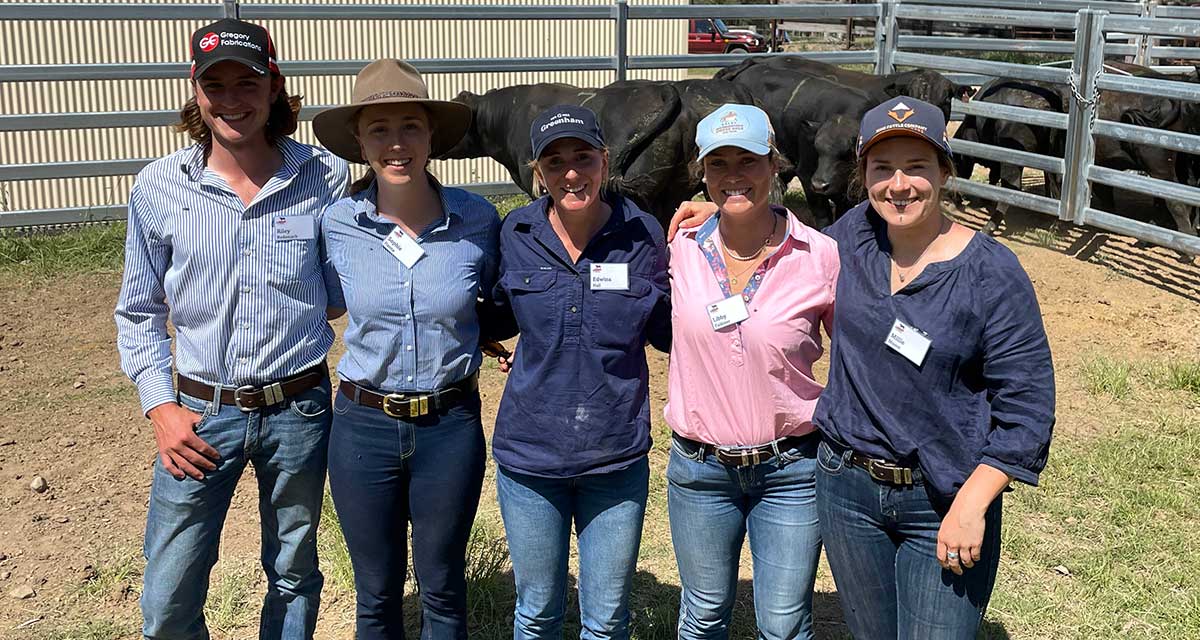

The 2023 Tocal Beef Cattle Assessment School took place in December and saw five Angus Australia members take part in the three-day course thanks to the Angus Foundation.
Millie Moore, Libby Falkiner, Edwina Hall, Sophie Hanna and Riley Badenoch all took part in the course, which ran the 4th – 6th of December and is widely recognised as the most practical and hands on beef cattle selection course of its kind.
The aim of the scholarships was to increase each of the recipient’s knowledge of the beef industry, their knowledge and skills in judging beef cattle, expose them to industry leaders and develop their judging skills.
Each recipient has put together a report summarising their experience. Read them here:
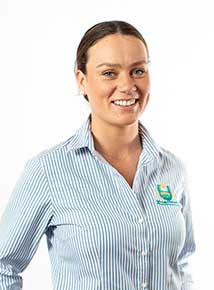 Monday the 4th of December saw cattle enthusiasts from across the country congregate at the picturesque Paterson campus of Tocal College. Organised by the Angus NSW committee, the Tocal Beef Cattle Assessment school didn’t disappoint in its delivery of the perfect blend of informative lectures and hands on practical experience.
Monday the 4th of December saw cattle enthusiasts from across the country congregate at the picturesque Paterson campus of Tocal College. Organised by the Angus NSW committee, the Tocal Beef Cattle Assessment school didn’t disappoint in its delivery of the perfect blend of informative lectures and hands on practical experience.
Over three days, we spent time learning not only from the gun lineup of program coordinators but from each other. Teachers, students, workman, genetics enthusiasts and producers alike spoke passionately about the various aspects of the beef supply chain they were involved in.
In the cattle yards, we braved the December sun and judged class after class of cattle, placing them based on their market suitability and answering observational questions. The culture of the program allowed for an incredibly positive and encouraging space for us all to take turns explaining the rationale behind our choices. Whilst in the beginning this coaxed many of us outside our comfort zone, it was incredible to watch the development of fellow participants skills, knowledge and confidence as the days progressed.
A personal highlight (that came as a total shock to me with no previous judging experience!) was to be included in the top 10 after the class scores from the previous 3 days were tallied. Whilst my personal performance in the spoken class could do with a lot of improvement, I was blown away by the talent of some of the younger participants in particular who not only had the lingo down pat, but a great eye for cattle and terrific understanding of the suitability of different beasts for various markets.
Following delicious meals in the evening, we attended topical seminars presented by industry professionals. Presentations touched on MSA grading, EBVs, structural assessments and predictions for the future of the cattle industry both in Australia and across the world. Together with the practical skills and deepened understanding of target markets and specifications we all concluded our time at Tocal equipped with invaluable knowledge, relevant and applicable no matter what aspect of the beef supply chain we are involved in.
I would like to thank The Angus Foundation for nurturing my desire to learn more about cattle production and for their generosity in sponsoring my time at Tocal. In addition to the skills I have learned, I have forged strong connections within the industry across Australia that I look forward to fostering for years to come.
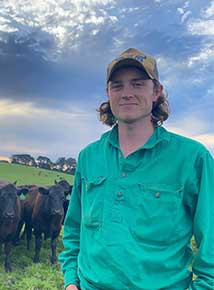 The Tocal Beef Cattle Assessment course is a three-day event that covers a wide range of topics using Bos Taurus, Bos Indicus breeds, and crosses to aid in learning. The topics covered include the use of EBV’s, structural conformation and market requirements with both theory and practicals used for participants to learn. Participants come from various backgrounds and experience levels within the industry, all sharing the common goal of expanding their skill set in cattle assessment.
The Tocal Beef Cattle Assessment course is a three-day event that covers a wide range of topics using Bos Taurus, Bos Indicus breeds, and crosses to aid in learning. The topics covered include the use of EBV’s, structural conformation and market requirements with both theory and practicals used for participants to learn. Participants come from various backgrounds and experience levels within the industry, all sharing the common goal of expanding their skill set in cattle assessment.
The course structure entailed participants attending short and informative lectures, along with guest speakers and then utilising the lecture content within practicals in the yards. Practicals in the yards involved participants having to rank a pen with four head of cattle in it from first to fourth based on a specific scenario. Some scenarios included examples such as selecting heifers for grass finished steers and replacement heifers, or steers to kill today with a carcase weight between 215-315kg and a maximum of 18mm of fat. Participants were only given a certain amount of time to judge each pen of cattle and then were asked five questions specific to those cattle. After completion of the pens of cattle, participants and course coordinators would then discuss their rankings of the cattle and why.
Throughout the course, cattle judging classes started off with mainly selecting on fat and muscle to suit feedlots or abattoirs. When assessing fat on cattle, there are two ways to determine the fat content: manual fat scoring and visual assessment. Manual fat scoring involved feeling the short ribs over the loin, the long ribs, the flank and around the tail area. Different descriptions on the key areas are given on how these areas should feel, such as “the short ribs can only be felt with moderate pressure. The descriptions of these areas then correspond to an AUSMEAT fat score between one to six, which also gives an approximate P8 rump fat depth. The second method of visual assessment involves looking at key areas on cattle such as the underline, brisket, flank, cod and twist, as well as the tail area. Enlargement of many of these areas are a useful indicator on the fatness of an animal without having to manually fat score.
Along with fat, muscle was another key component in the performance of feedlot and kill cattle. Muscle is highly important as it will impact the carcase yield and trade suitability. Visual inspections are able to be made when assessing for muscle, key areas include the backline width, the stance of the animal, the shape of the hindquarter from the side, and finally how prominent the stifle is. Leaner cattle also have muscle seams a lot more evident than fat cattle.
After covering the concepts of fat and muscle, structure was then the next focus within the course. Structure is important as it will ultimately determine the lifespan of an animal within a livestock operation. Poor structured animals are more susceptible to lameness and also traits which are undesirable to be passed onto offspring. Structural traits discussed within the course included the correct leg angle, not having cattle with post legged or sickle hocked, ensuring front on legs are not bowed or knock kneed, as well as the pastern angle. All these traits will also influence claw wear and growth, which can lead to breakdowns. Important breeding traits were then focused on which included bulls with large scrotums to be able to serve lots of cattle, having a short sheath to ensure the pizzle presents properly and female cattle having small teats allowing easy extraction of milk for calves. Although there are many more factors for structure in cattle, these discussed traits along with the first-class learnings of fat and muscle were then used in the yards to select heifers and bulls based on specific scenarios again in breeding operations.
To finish the theory element of the course, EBV’s were lastly discussed. EBV’s or estimated breeding values are a set of values which can be used to estimate an animal’s breeding potential. EBV’s are formulated by a combination of performance data, pedigree and genomics on animals. The EBV will compare an animal to the current breed average for a number of different traits such as calving ease and 200-day weight gain. These traits focus on a few groups such as, fertility and calving, weight, and carcass performance. Accuracy of these traits are provided as well as the percentiles of where the traits sit within the breed. EBV’s are a useful tool to then assist in the selection of cattle to understand how the offspring is likely to perform, along with the assessing the phenotype of the animal. Once again, participants of the course then used structure, fat and muscling and finally EBV’s to then select a class of bulls and heifers.
Conclusion
The three-day course entailed a large range of practical as well as theoretical components, catering to a vast range of skills and experiences among participants. The use of modules in the course, starting with simple selection traits such as muscling and fat, then progressing to structure and finally EBVs, allowed participants to build their knowledge and confidence in selecting livestock for specific scenarios. It is important to understand that different types of cattle are suited for different operations. Understanding the specific requirements of an operation and knowing which cattle will suit it best can lead to a higher sale value of increased numbers sold, and ultimately greater profits for the business.
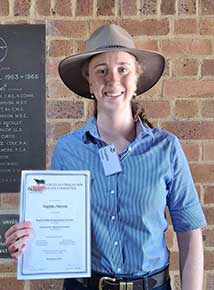 The Tocal Beef Cattle Assessment Course is one of the best professional development courses in which I have participated, and I would like to thank Angus Australia very much for this extraordinary opportunity.
The Tocal Beef Cattle Assessment Course is one of the best professional development courses in which I have participated, and I would like to thank Angus Australia very much for this extraordinary opportunity.
The practical course strengthened our understanding of the key physical and genetic attributes to look for when assessing and selecting live cattle for their target market and breeding system. Throughout the invaluable three days we practiced and critiqued our yield, condition, structure and Estimated Breeding Value (EBVs) assessment skills over numerous classes of cattle. In addition to learning from an outstanding team of mentors, the opportunity to network with 60 like-minded beef cattle enthusiasts was fantastic and a lot of fun.
It was excellent learning the theory in the lecture theatre before jumping into the yards to test our understandings and discuss key considerations as we looked at cattle. Grasping the key market specifications for Australian beef and the various consumer demands, domestic and international, formed a strong foundation for building our beef cattle assessment skills. By understanding the final product processors are aiming for, our mentors drew the connection to the selection criteria livestock buyers use when purchasing terminal stock.
Understanding what buyers are looking for in cattle, whether it be condition, yield, stage of maturity, or structural soundness, and how much emphasis they put on each, enabled us to get our eye in on what to look for, and where, on a live animal. Coming from a commercial Angus self-replacing farm in the Upper Murray, Victoria, understanding what our buyers are looking for is critical for enabling us to continue improving our herd’s performance, keeping in mind we must also prioritise maternal characteristics to ensure the sustainability of our breeding herd.
In the yards we assessed classes of cattle based on a defined target market and/or breeding system, individually, before discussing our perspectives as a group to refine our understandings and assessment capabilities, as well as our communication skills.
“Bulls for markets, cows for country” was a key message discussed over the course. Our mentors explained how the type of cattle we run and the markets we target must suit our landscape and climate. When selecting and culling stock, and overall improving our genetics, we should be selecting for traits that improve the productivity of our terminal stock, while also selecting for traits that enhance or maintain our breeding herd, such structural soundness and fertility traits. The opportunity to assess Angus and crossbred steers, heifers and bulls helped me understand critical yield, condition and structural differences between breeds and how this impacts their suitability for various climates and target markets.
After critiquing our physical assessment skills, on the third day we practiced making bull and heifer selections utilising their EBVs in addition to their phenotypes. It was fantastic applying all the skills we had developed over the three days to assess these final classes. I look forward to applying these exact skills with my family when selecting heifers to breed from and bulls to purchase for years to come.
I would like to sincerely thank the team of mentors who explained in great detail the numerous important considerations behind assessing and selecting beef cattle; Bob Dent, Bryce Whale, Steve Chase, James Laurie, Jake Philips, and Jack Laurie. To learn and be part of discussions in the yards and lecture theatre with a team of mentors of such high calibre was an honour and an experience I will continuously use throughout my career both on and off the farm. Thank you very much for all your hard work leading up to and throughout this invaluable course. To all the participants, thank you for enriching this experience by engaging in great beef cattle discussions. I look forward to meeting you again throughout our careers as we work together to continue advancing our great industry. A huge thank you to Angus Australia for providing me the Tocal Beef Cattle Assessment School scholarship which made it all possible. I couldn’t recommend this course and scholarship more highly for any young beef cattle enthusiast who is keen to strengthen their beef cattle skills and network. If you’re like me, this may be the best professional development course you attend to date.
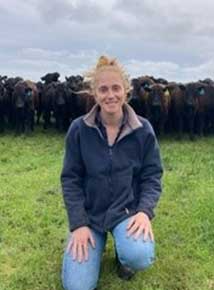 From the 4th-6th December 2023, I was given the opportunity to attend the Tocal Beef Assessment Course, as a recipient of an Angus Youth Australia scholarship. I saw Tocal as an opportunity to strengthen my skillset in relation to assessing and selecting cattle for commercial practise and increase my knowledge of genetics and their function within our family business. The course consisted of 3 intensive days, with particular focus on carcase, structure and condition assessment, identifying market requirements and selecting cattle to best suit these markets, and the use of EBV’s to enhance bull selection. It was evident that considerable thought and planning went into developing the course, which delivered industry relevant information to cater to participants from all aspects of the beef industry. Over the course of the 3 days, theory classes were followed by mock judging classes and group discussions. I found this a very effective learning structure as it was fast moving and engaging and provided ample opportunity to discuss any queries.
From the 4th-6th December 2023, I was given the opportunity to attend the Tocal Beef Assessment Course, as a recipient of an Angus Youth Australia scholarship. I saw Tocal as an opportunity to strengthen my skillset in relation to assessing and selecting cattle for commercial practise and increase my knowledge of genetics and their function within our family business. The course consisted of 3 intensive days, with particular focus on carcase, structure and condition assessment, identifying market requirements and selecting cattle to best suit these markets, and the use of EBV’s to enhance bull selection. It was evident that considerable thought and planning went into developing the course, which delivered industry relevant information to cater to participants from all aspects of the beef industry. Over the course of the 3 days, theory classes were followed by mock judging classes and group discussions. I found this a very effective learning structure as it was fast moving and engaging and provided ample opportunity to discuss any queries.
The Tocal Beef Assessment Course exceeded my expectations, providing me with the required knowledge and skills to be able to confidently assess cattle. Tocal also provided an opportunity to meet other individuals from all aspects of the industry and discuss experiences gained through different career pathways. The knowledge learnt at Tocal has provided me with the opportunity to work more independently and confidently within our family business, with the new skills already utilised. I thoroughly encourage others seeking training in cattle assessment, and an opportunity to meet and network with others, to attend Tocal.
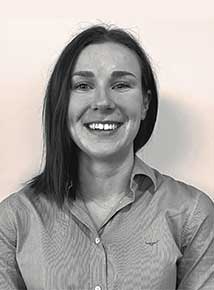 I feel incredibly fortunate to be the recipient of a 2023 Angus Australia scholarship to attend the Tocal Beef Assessment School. It would not have been possible for me to attend without it, and the support offered by Angus Australia and the Tocal committee gave me the confidence to give my all during the week.
I feel incredibly fortunate to be the recipient of a 2023 Angus Australia scholarship to attend the Tocal Beef Assessment School. It would not have been possible for me to attend without it, and the support offered by Angus Australia and the Tocal committee gave me the confidence to give my all during the week.
I was blown away by the knowledge of the overjudges and educators, each being incredible cattlemen in their own right and offering many perspectives on cattle assessment and judging. I likened the judging style to that of the ICMJ competition which I am familiar with, and the link between the two helped me to understand how the characteristics being chased in the end market are reflected in the live cattle trade.
I believe anyone in the beef industry would benefit greatly from this school. Being in an advisory role myself, I am often on the outside looking in, however each of us in our varying roles need to remember that everything is market driven, and we need to look to what the consumer wants. Identifying a target market made everything fall into place, as we looked to the differences in grassfed and grainfed, feeding or breeding systems, and where different cattle types and ages fit.
It is rare to have a school where 90% of time is spent in the yards, with each component discussed hands-on, with insight from the extensive backgrounds of the overjudges. The diversity of the group attending the school also offered incredible knowledge on both stud and commercial operations, and allowed everyone to walk away assessing their own breeding objectives and aims for their herd.
I am only just getting started in the beef industry, with a few cattle of my own, and it can be easy to get wrapped up in ‘getting it all right’ or what you ‘should’ be aiming for. The take home from the school was to take a step back; look at the broader picture, where are you going and what small steps can you take to get there.
A highlight was also getting to know the others in the course; with a diverse range of attendees from across Australia, with the common theme of a passion for better beef, meal times were never a quiet affair and I have come home from the course feeling inspired, with new contacts and the confidence to keep chasing my goals, one cow at a time!
Once again, a massive thank you to the whole team that keeps Tocal running and the rest of the Angus Australia team who made this scholarship possible.